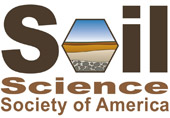Soil Nutrient Stocks and Litter Input in Primary Forest Under Selective Logging, Brazilian Amazonia.
See more from this Division: OralSoil Nutrient Stocks and Litter Input in Primary Forest Under Selective Logging, Brazilian Amazonia.
See more from this Session: Biodiversity and Ecological Sustainability 3C
Saturday, March 8, 2014: 3:35 PM
Grand Sheraton, Camellia
Despite the assumption of sustainability that underlines the regulation of low impact logging in the Amazon region, little is known about how this type of management affects biogeochemical processes controlling soil-plant interactions. We measured litterfall and soil physical and chemical properties in upland (terra firme) forests under selective logging to evaluate these effects. Managed forest tracts (UPAs) logged in 2003, 2005, 2007 and 2009 were used to establish a chronosequence and evaluate responses to logging in 15 plots (100 x 50 m) in 4 UPAs and 1 Protected Area (APA), sampled in Silves, Amazonas, Brazil. In each plot, standing litter was sampled in 0.25 m² subplots, soil penetration resistance was determined, and composite soil samples taken (0-10, 10-30, 30-50 cm). Physical and chemical soil properties and litter nutrients (N, P, K, Ca, Mg, S, Al) were determined in the laboratory. Soil properties and calculated litter nutrient inputs were used to compare sites using principal component analyses (PCA). PCA ordinations and cluster analysis showed low dissimilarity between UPAs and APA (< 25%), reflecting low impact on litter biomass at the recommended logging intensity (12.1 to 19.1 m³ ha-1 yr-1). The most affected soil and litter properties were Ca, Mg, and P availability/content, which correlated with time since logging (higher values in higher post-logging age). Overall, high soil organic matter content was found in all UPAs (20.6 to 64.1 g kg-1), providing evidence of low impact on ecosystem function and supporting the assumption of sustainability with selective logging with respect to soil carbon and nutrient stocks.
See more from this Division: OralKey-words: Sustainable Forest Management; Soil organic matter; Forest tracts; Cluster Analysis.
See more from this Session: Biodiversity and Ecological Sustainability 3C
